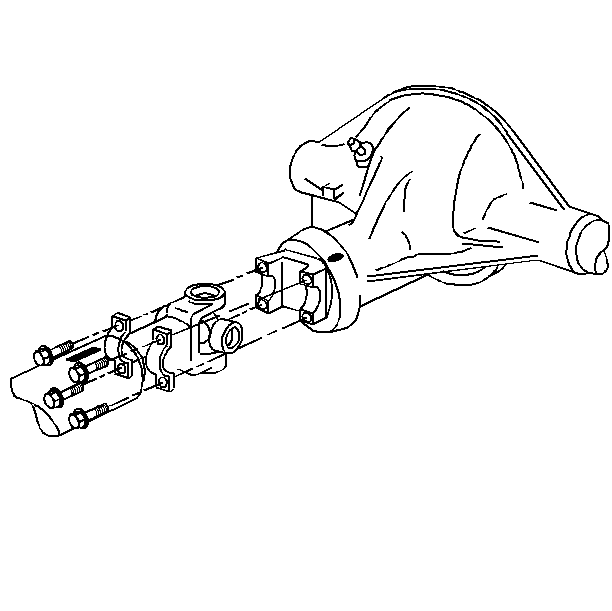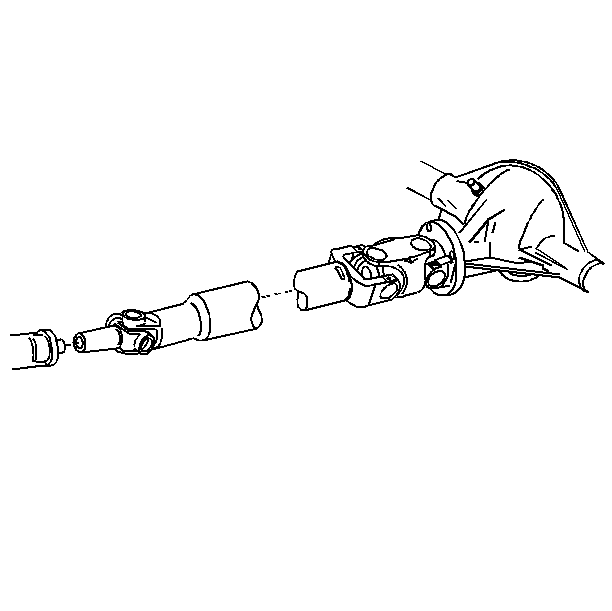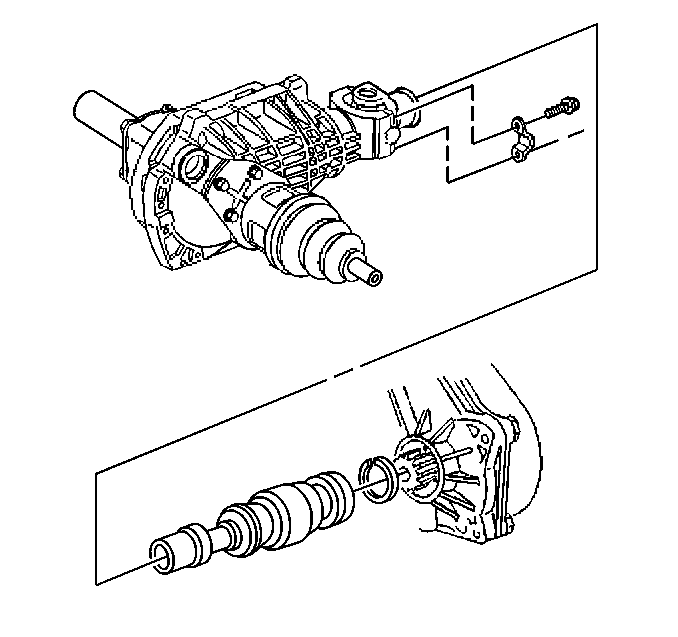
The propeller shaft is a steel tube that transmits power from the transmission or transfer case output shaft to the differential.
A single cardan universal joint and splined slip yoke are located at the transmission end of the shaft where they are held in alignment by a bushing in the rear of the transmission. The slip yoke permits fore and aft movement of the propeller shaft as the differential assembly moves up and down. Lubricate the spline internally with transmission lubricant. For a two-piece propeller shaft, lubricate with chassis grease. An oil seal prevents leakage and protects the slip yoke from dust, dirt and other harmful material.

A double cardan joint consists of two single joints connected by a special link yoke. A ball and socket centering device is located between the crosses in order to maintain their relative positions, causing each cross to divide one half of the total angle across the joint equally. Using the double cardan joint virtually eliminates all problems with propeller shafts caused by universal joint angles. The rear of each propeller shaft attaches to the differential assembly by a double flange with four bolts.
A second universal joint is used where the propeller shaft flange mates with the pinion flange.

A CV (constant velocity) universal joint driveshaft transmits power from the transfer case to the front differential.
The driveshaft is splined to the transfer case and attached to the front axle companion flange by the flanges on the outer bearing retainers. A plastic shroud protects and retains the dust boot to the bearing retainer and flange assembly. Avoid jamming, bending or over-angulating any parts of the propeller shaft assembly.
When undercoating the vehicle, keep the propeller shaft free of undercoating material. Undercoating material or any other foreign material affects the propeller shaft balance and produces serious vibrations.
